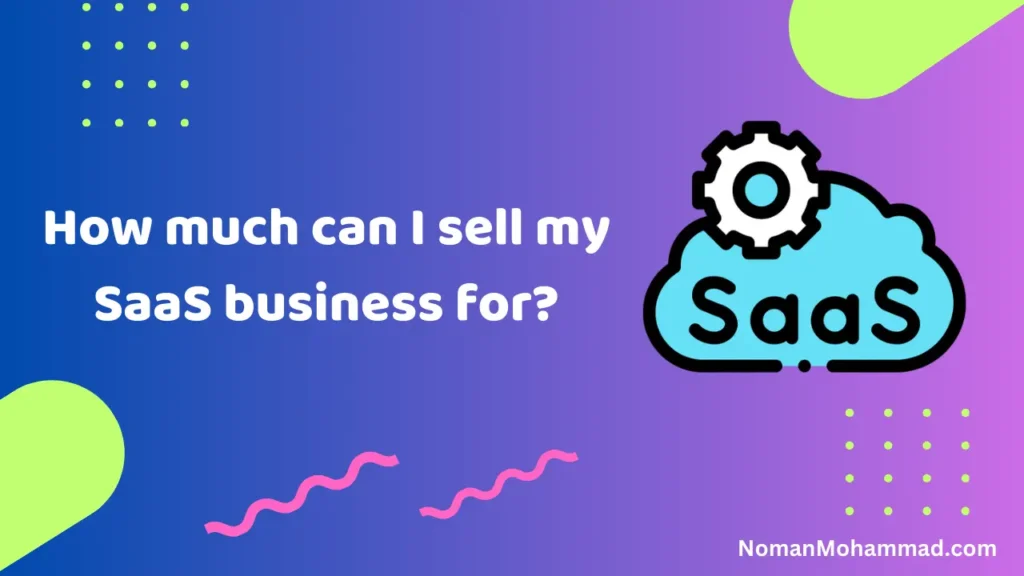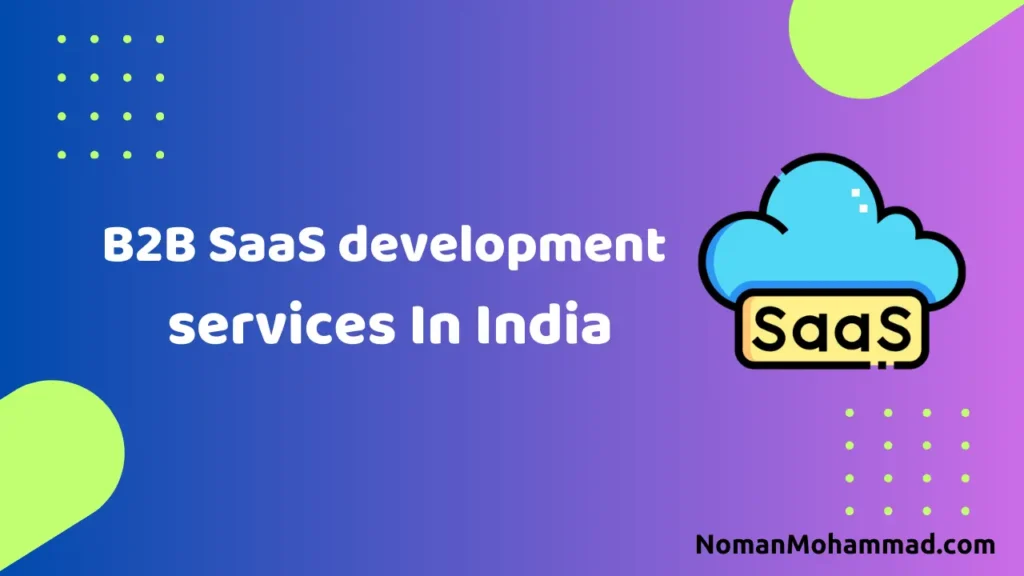The amount you can sell your SaaS business for typically ranges from 3x to 10x your annual revenue, depending on various factors like growth rate, customer retention, and market conditions. Understanding the true value of your SaaS business can be a game-changer, especially if you’re considering selling.
Selling a SaaS business isn’t just about the numbers; it’s about showcasing the potential of what you’ve built. In this guide, we’ll explore the key factors that can influence your SaaS business’s valuation, helping you better understand how much you can sell it for.
When it comes to selling a SaaS (Software as a Service) business, the process can feel overwhelming. There’s a lot to consider, from understanding how valuations work to knowing what buyers are looking for.
This guide aims to demystify the valuation process, so you can confidently navigate the sale of your SaaS business and get the best possible deal.
- 1 Understand The Factors That Influence SaaS Business Valuations:
- 1.0.1 2. Key Factors Affecting SaaS Valuation
- 1.0.2 3. How Revenue Multiples Are Determined
- 1.0.3 4. The Role of Growth Rate in SaaS Valuation
- 1.0.4 5. Why Customer Churn Matters
- 1.0.5 6. Importance of Market Conditions
- 1.0.6 7. How to Prepare Your SaaS Business for Sale
- 1.0.7 8. Finding the Right Buyer
- 1.0.8 9. Common Pitfalls to Avoid When Selling a SaaS Business
- 1.0.9 Conclusion: Maximizing Your SaaS Business’s Sale Price
1. Understanding SaaS Business Valuation
Valuing a SaaS business is not a one-size-fits-all process. The valuation is influenced by multiple factors such as revenue, growth rate, and customer base. Typically, SaaS businesses are valued using a revenue multiple. This multiple can vary significantly depending on the health of your business.
For example, a SaaS business with consistent revenue growth and low churn rates might command a higher multiple, typically ranging between 3x to 10x the annual revenue. On the other hand, if your business has high customer acquisition costs or is in a highly competitive market, you might be looking at the lower end of that range.
It’s essential to understand that market trends also play a significant role in determining your SaaS business’s value. For instance, in a booming tech market, buyers might be willing to pay a premium, pushing the multiple higher.
Understand The Factors That Influence SaaS Business Valuations:
| Factor | Description | Impact on Valuation | Actionable Tips |
|---|---|---|---|
| Annual Recurring Revenue (ARR) | Total recurring revenue expected over a year. | Higher ARR generally leads to a higher valuation. | Focus on increasing ARR through customer acquisition and retention. |
| Customer Churn Rate | Percentage of customers who stop using your service over a period of time. | Lower churn rates result in higher valuation. | Improve customer satisfaction and engagement to reduce churn. |
| Growth Rate | The speed at which your revenue and customer base are increasing. | Higher growth rates are attractive to buyers. | Invest in scalable marketing strategies to drive growth. |
| Market Conditions | The overall state of the SaaS market and economy. | Booming markets can push valuations higher. | Monitor market trends and time your sale accordingly. |
| Profitability (EBITDA) | Earnings before interest, taxes, depreciation, and amortization. | Positive EBITDA can enhance valuation multiples. | Optimize operations to improve profitability. |
| Customer Lifetime Value (CLTV) | The total revenue expected from a customer over their lifetime. | Higher CLTV boosts valuation by showing long-term potential. | Enhance customer relationships and upsell opportunities. |
| Competitive Positioning | Your business’s standing in the market relative to competitors. | Strong market positioning can command a premium price. | Differentiate your product and build a strong brand. |
| Scalability | The ability of your business to grow without proportionately increasing costs. | Highly scalable businesses are valued higher. | Invest in technology and processes that support scalability. |
| Buyer Synergy | The strategic fit between your business and potential buyers. | A good synergy can lead to a higher offer from the buyer. | Identify buyers with a strategic interest in your niche. |
2. Key Factors Affecting SaaS Valuation
When determining how much you can sell your SaaS business for, several key factors come into play. First and foremost is your Annual Recurring Revenue (ARR), which is the backbone of any SaaS valuation. ARR provides a clear picture of your business’s financial health and future potential. Buyers will closely examine your ARR to determine the stability and growth prospects of your business.
Another critical factor is customer churn. High customer retention suggests that your product is valuable and that customers are satisfied, which can drive up your valuation. Conversely, high churn rates can significantly decrease the multiple buyers are willing to pay.
Lastly, market positioning and competitive landscape are crucial. A SaaS business with a unique product in a niche market may attract higher offers due to less competition and higher barriers to entry for competitors.
3. How Revenue Multiples Are Determined
Revenue multiples are a common method used to value SaaS businesses, but how are these multiples determined? Typically, multiples are based on a combination of your business’s growth rate, profitability, and market dynamics. For example, a SaaS company growing at 50% year-over-year with strong profit margins could attract a higher multiple compared to a slower-growing competitor.
It’s also important to consider earnings before interest, taxes, depreciation, and amortization (EBITDA). While many SaaS companies might operate at a loss due to high growth spending, those with positive EBITDA can often secure better multiples because they demonstrate financial stability.
Market sentiment can also influence multiples. In a bullish market, where there’s high demand for SaaS businesses, multiples tend to be on the higher side. Conversely, in a bearish market, buyers may be more conservative, leading to lower multiples.
4. The Role of Growth Rate in SaaS Valuation
Growth rate is a critical driver of SaaS valuation. A higher growth rate typically translates to a higher valuation, as it indicates strong future potential. Buyers are often looking for businesses that not only have a proven revenue model but are also expanding quickly.
To assess growth, buyers will look at your year-over-year growth in both revenue and customer base. They will also examine the sustainability of your growth—for instance, whether it’s coming from new customer acquisition, upselling to existing customers, or expansion into new markets.
However, growth alone isn’t enough. It needs to be sustainable. A SaaS company experiencing rapid growth due to aggressive discounting or short-term promotions might not be as attractive to buyers, as this growth may not be sustainable in the long run.
5. Why Customer Churn Matters
Customer churn, or the rate at which customers stop using your service, is a critical metric for SaaS valuation. A lower churn rate suggests that customers find long-term value in your service, which is attractive to buyers. It indicates that your revenue stream is stable and that you have a loyal customer base.
Buyers often calculate the Customer Lifetime Value (CLTV) and compare it with the Customer Acquisition Cost (CAC) to evaluate the profitability of your customers over time. If your CLTV is significantly higher than your CAC, it indicates a healthy business model that could command a higher valuation.
High churn rates, on the other hand, can be a red flag. They might suggest that your product is not essential to customers, or that there’s a lot of competition, both of which can negatively impact your valuation.
6. Importance of Market Conditions
Market conditions play a significant role in determining the valuation of your SaaS business. In a strong economy with a booming tech sector, buyers might be willing to pay more, leading to higher valuations. Conversely, in a downturn, buyers might be more cautious and offer lower multiples.
It’s also important to consider the state of the SaaS market specifically. Are there a lot of acquisitions happening? Is there a demand for your type of SaaS product? These factors can significantly influence how much buyers are willing to pay for your business.
Timing your sale to align with favorable market conditions can make a substantial difference in the final sale price of your business.
7. How to Prepare Your SaaS Business for Sale
Preparation is key when selling your SaaS business. First, you need to ensure that your financials are in order. This includes having accurate and up-to-date financial statements, detailed revenue reports, and a clear understanding of your costs.
You should also work on improving key metrics like ARR, customer churn, and growth rate in the months leading up to the sale. Optimizing these metrics can significantly increase your business’s valuation.
Lastly, consider creating a detailed prospectus that outlines your business’s strengths, growth potential, and why it’s a good investment. This document will be crucial in attracting serious buyers and securing the best possible price.
8. Finding the Right Buyer
Finding the right buyer is crucial for a successful sale. Ideally, you want a buyer who understands the SaaS business model and sees the long-term value in your company. There are several places to find potential buyers, including SaaS-specific marketplaces, business brokers, and direct outreach.
When evaluating buyers, consider their experience in the SaaS space, their financial capacity, and their vision for your business. It’s also essential to ensure that they align with your company’s values and culture, especially if you want to ensure the continuity of your business post-sale.
Negotiating the terms of the sale is the final step. This includes not just the sale price, but also other important terms like earn-outs, retention of key employees, and non-compete agreements.
9. Common Pitfalls to Avoid When Selling a SaaS Business
Selling a SaaS business is a complex process with many potential pitfalls. One common mistake is overestimating the value of your business. While it’s natural to want the best price, setting an unrealistic asking price can drive away potential buyers.
Another pitfall is not preparing adequately. If your financials aren’t in order, or if you can’t clearly explain your business’s value proposition, you might struggle to attract serious buyers or secure a good deal.
Lastly, choosing the wrong buyer can lead to problems down the line. It’s important to vet potential buyers thoroughly to ensure they have the resources and expertise to take your business to the next level.
Conclusion: Maximizing Your SaaS Business’s Sale Price
Selling your SaaS business can be one of the most significant financial decisions you’ll ever make. By understanding the factors that influence valuation, preparing your business for sale, and finding the right buyer, you can maximize the price you receive. Remember, it’s not just about the numbers—how you position your business and the timing of your sale can make a significant difference in the final outcome.






